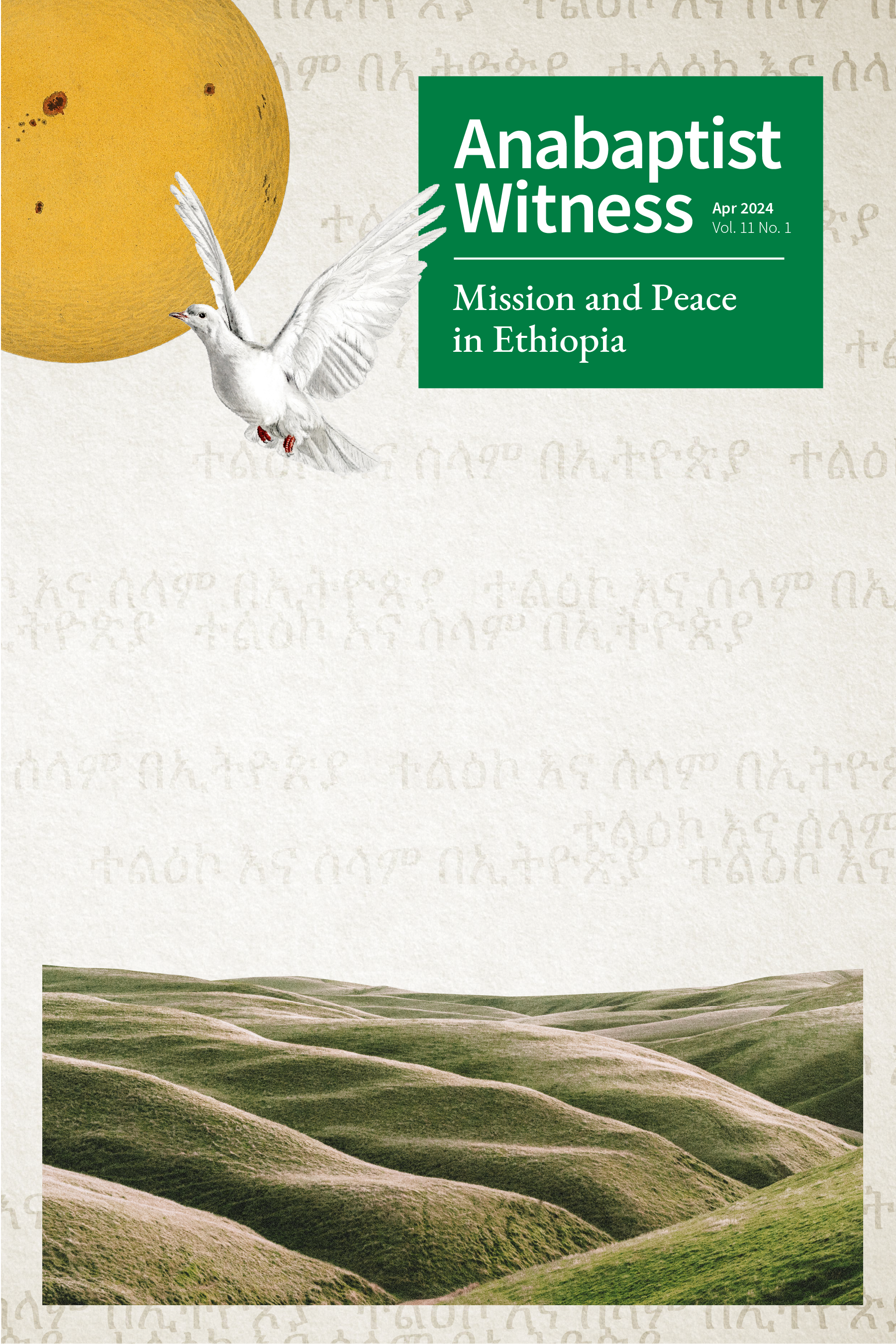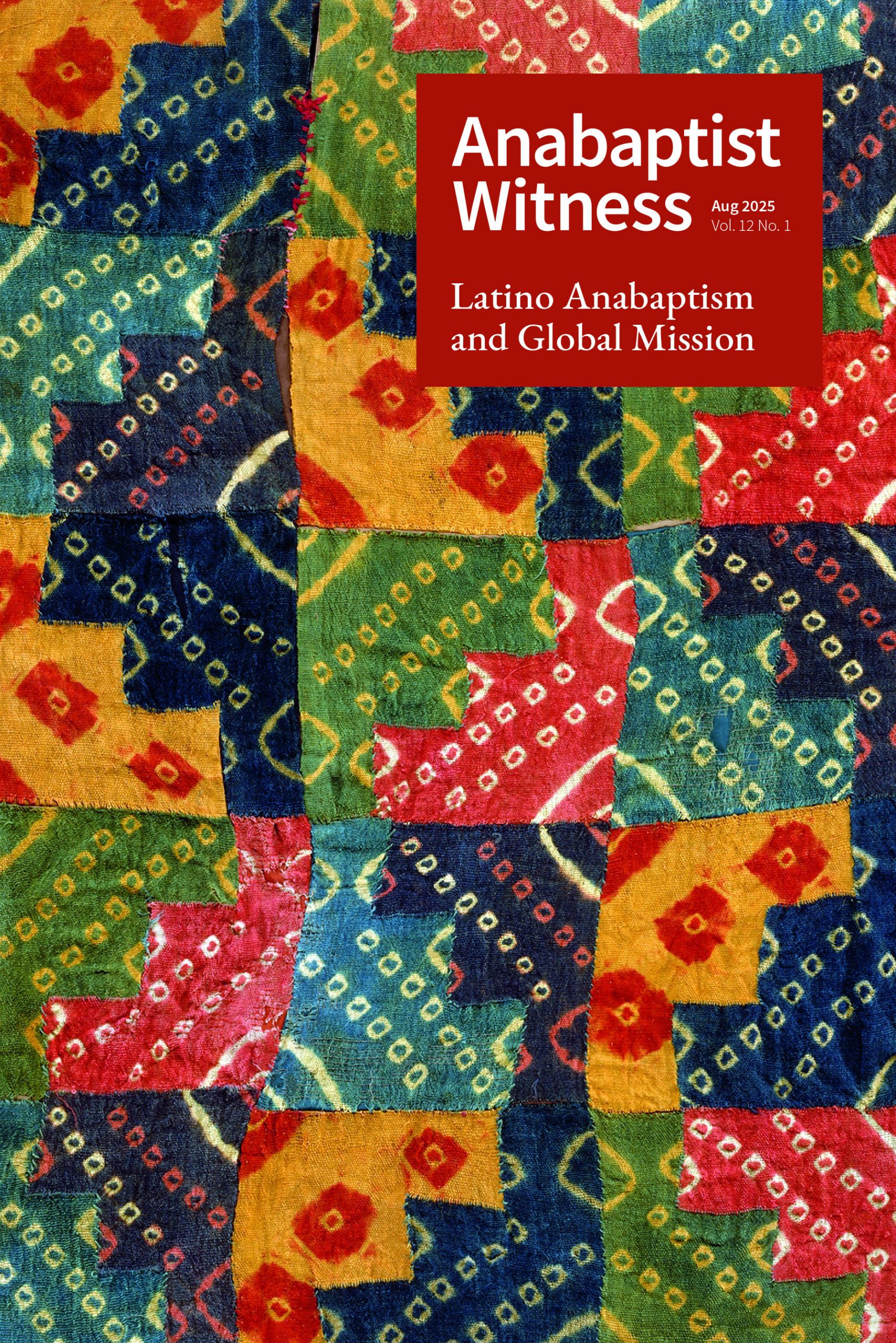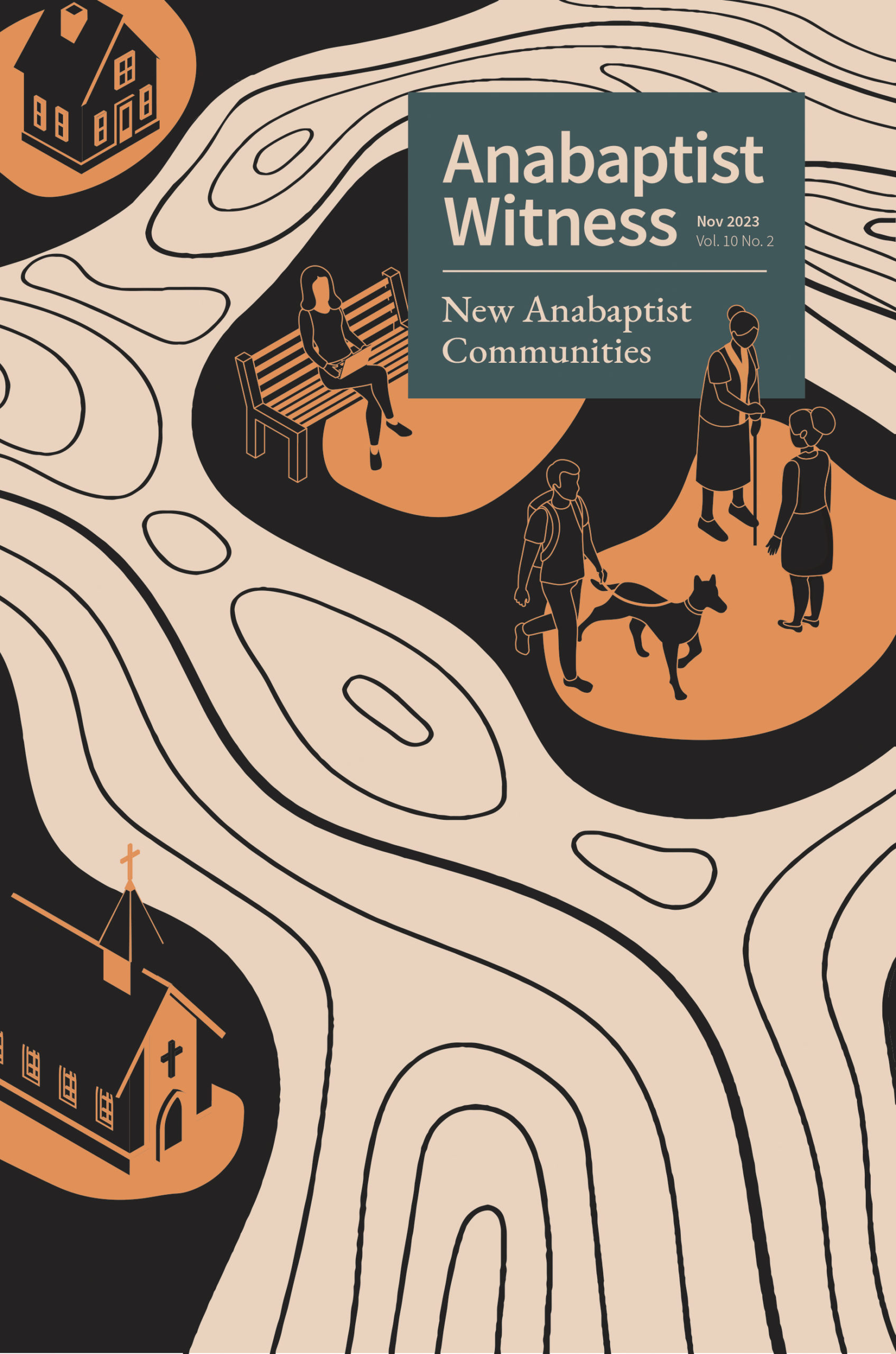Mission and Peace in Ethiopia
About This Issue Download this issue
Mission and Peace in Ethiopia
Mennonite World Conference (MWC) in 2022 reported the baptized membership of the Meserete Kristos Church (MKC) in Ethiopia at around 515,000 adult members, making it the largest national body in the global MWC family. Much has been written in other places about the growth of the MKC since its origins through the efforts of local believers and North American Mennonite missionaries in the 1940s, the founding of its first congregation in 1951, the 1959 adoption of its name (Meserete Kristos Church, “Christ is the Foundation Church”), its underground life during the era of Communist rule in the 1980s, and its growth and ministry expansion in the early decades of the twenty-first century.
With its high ecumenical dimension and the significant role hybridity plays in the identity of the MKC, Anabaptist essentials have been tested and reshaped within the Ethiopian context. Preparations are already underway in Ethiopia for MKC to host a global Mennonite World Conference Assembly in 2028.
As we have worked on this issue of Anabaptist Witness, our hope and vision has been that this collection of essays and book reviews would contribute to the sharing of gifts for mutual growth among Anabaptist/Mennonite churches across the globe. We would also be very happy to see this as one of the resources to which people turn as global Anabaptist communities prepare to attend the 2028 Mennonite World Conference Assembly in Ethiopia as part of the 500th commemoration of the origins of the Anabaptist movement.
There is so much opportunity for learning and exchange between people, churches, and institutions located in different global contexts if we open up some space to be exposed to and learn what God has been doing beyond our usual relational and conversation circles. In doing so, not only will Anabaptist churches in Ethiopia, Tanzania, Kenya, India, and Indonesia learn what God has been up to far from their home settings, but Mennonite churches in the West will also learn about God’s actions through the church in Ethiopia, India, Indonesia, and beyond. All of us will be strengthened in our faith if we intentionally seek out the voices of sisters and brothers living out their faith in contexts different from our own.
The articles in this issue are organized in two large sections. The first focuses on mission and peace efforts in the broader context of the Ethiopian nation through a biblical reflection (Yimenu Adimass Belay), an application of the Christus Victor narrative within the Ethiopian setting (Geleta Tesfaye Berisso), and a survey of publications promoting interfaith conversations between Ethiopian Orthodox and Evangelical Christians (Abenezer S. Dejene).
The second section focuses more specifically on Meserete Kristos Church history and perspectives and is subdivided into two parts: (1) The first subsection is entitled “Missionary Influences and Voices,” and is represented by two articles authored respectively by Ruth Haile Gelane and Carl E. Hansen, and an article co-authored by Desalegn Abebe Ejo and Kebede Bekere. (2) The second subsection focuses more specifically on MKC peace and mission efforts in the fields of trauma healing (Kebede Bekere and Mekonnen Gemeda), breaking cycles of “Black Blood” (Amdetsion Sisha), creating safe spaces (Rosemary Shenk), witnessing as a peacemaking “cruciform” community during the revolutionary era (Brent Kipfer), developing a peacemaking culture (Mekonnen Gemeda), and articulating a holistic approach to peacemaking where prayer, evangelism, and justice are intertwined (Henok T. Mekonin).
Three book reviews on various Ethiopian topics round out this issue, featuring a publication on one family’s personal odyssey in Ethiopia; a study on interchurch conversations between Ethiopian Orthodox and evangelical churches; and a volume on the painters, patrons, and purveyors of Ethiopian Church art.
—Henok T. Mekonin (Guest Editor)
—James R. Krabill (Interim Managing Editor)




